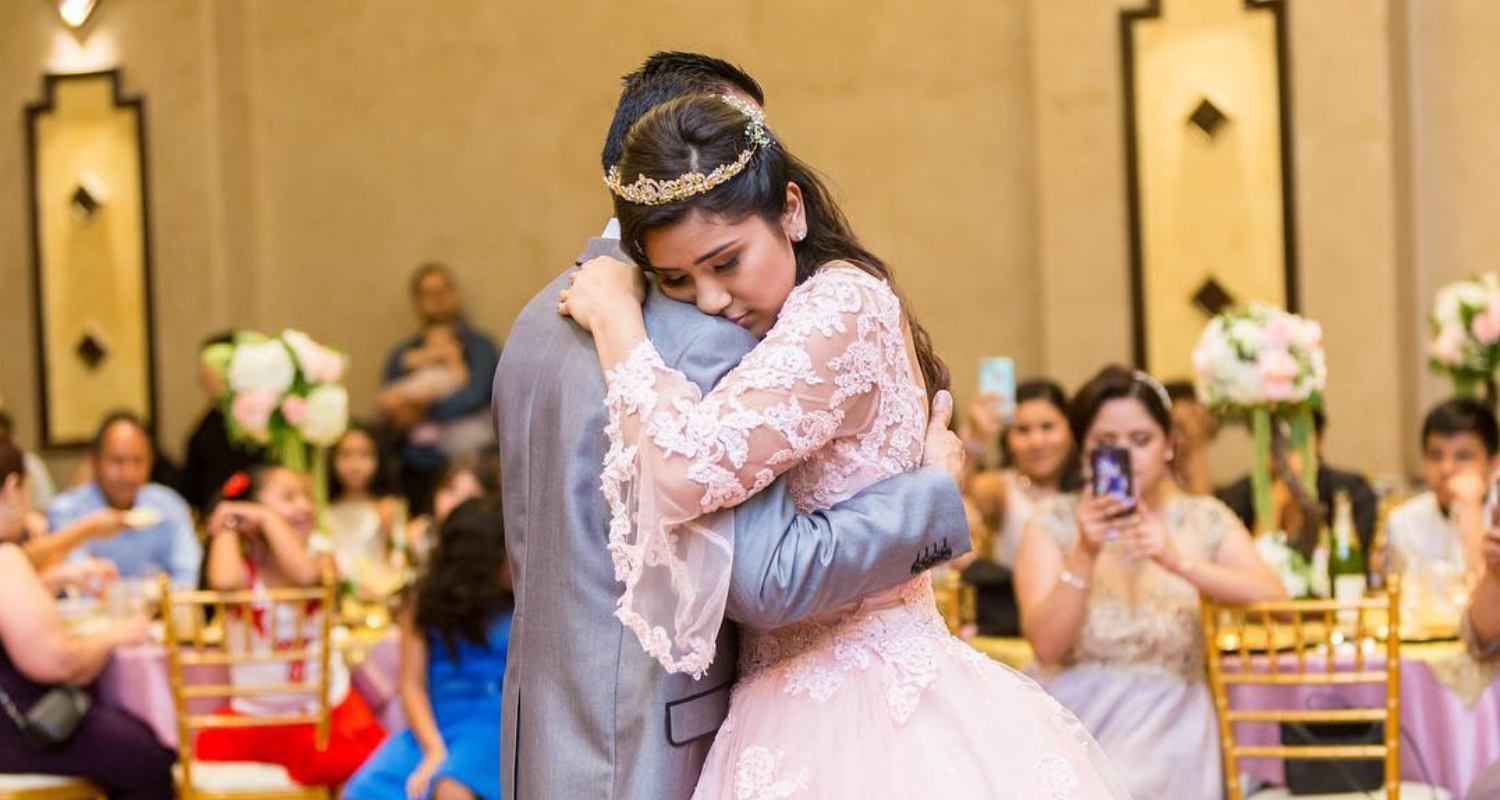
Quinceañeras have been a part of the Latinx tradition in celebrating the coming of age of typically, a young woman. However, more recently they have been used to celebrate the coming of age of young men as well. Celebrations for the coming of age of youth is not only designated to the Latinx community. In America and Canada we often see a take on the Quinceañera through the celebration of a sweet sixteen, and the bat mitzvah ceremony to celebrate the coming of age of 12 -13 year old youth is big in the Jewish community.
Knowing this, a key motif in a Quinceañera is the father daughter dance, where they often dance to Los Baron “La Ultima Muñeca” and “Ya No Crescas Mas” by Tercer Cielo as a symbol of the last doll that the father will give their daughter before becoming a woman.
Gradually, Quinceañeras have become more progressive by being inclusive of all genders including those who identify as nonbinary or queer. Something that remains the same in Latinx Quinceañeras is the type of music played to dance. From bachata, merengue, cumbia, salsa, norteñas, corridos, etc. Depending on what region of Latin America the family is based from determines the customs and music they choose to use.
At my Quinceañera, I wore the dress that my Grandmother chose for my Mother to wear at her Quinceañera. It was a vintage blush pink dress that my Mother passed down to me. This was very special because my Grandmother had it custom made for my Mother and it held sentimental value. One day I hope to pass it down to my daughter. The theme for my Quinceañera was Faith, Family, and Friends, which was also the same theme that my younger Brother had and which we plan my youngest Brother will also have when he turns 15. In some ways, we created our own traditions by celebrating all of my siblings and not only the girls, as well as dancing with each of our parents what would otherwise be known as the father daughter dance.
In some ways traditions can be maintained by making the overarching theme of the celebration of coming of age of the youth. Families choose the music based on their background and geographic ties as well as their upbringing. Though they can draw ties from Indigenous activities as is mentioned in the article below.
“In the early 15th century, before Spaniards invaded and colonized Latin America, Indigenous groups held ceremonies that commemorated the coming of age of both boys and girls" <1>
"Davalos, Karen Mary. 2021. “Quinceañera Style: Social Belonging and Latinx Consumer Identities.” Journal of American Folklore 134 (533): 355–57. https://doi.org/10.5406/jamerfolk.134.533.0355"<2>."Deiter, Kristen. 2002. “From Church Blessing to Quinceanera Barbie: America as ‘Spiritual Benefactor’ on La Quinceanera.” Christian Scholar’s Review 32 (1): 31–"<3>."Risling Baldy, Cutcha. 2018. We Are Dancing for You : Native Feminisms and the Revitalization of Women’s Coming-of-Age Ceremonies. Seattle: University of Washington Press" <4>.